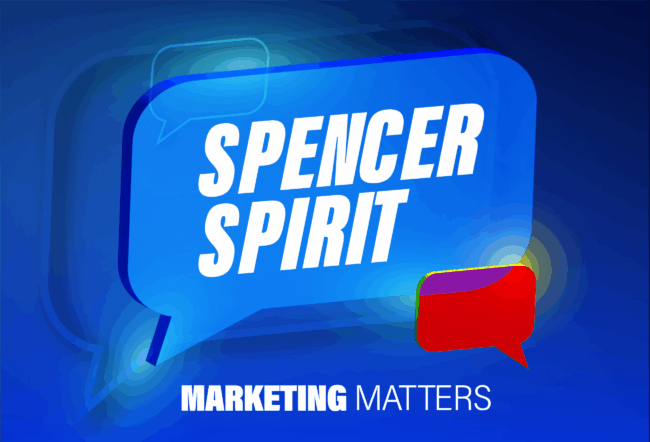If you weren’t texting friends, channel surfing or otherwise distracted during commercial breaks from Super Bowl 2014, what you would have seen is this: A vicious dog-monster attacking singer Sarah McLachlan’s guitar; a man in pajamas walking out the front door to pick up the morning paper, only to get body-slammed by a gorilla; a young boy negotiating a burning, post-apocalyptic landscape, bereft and grim until he happens upon — and is transformed by — a bag of corn chips.
To some, this year’s bellwether on the evolving American commercial seemed particularly violent. But was it? Just beneath the jolts, slams and Three Stooges antics lies something else, experts say: desperation.
“TV ads are a dying medium, so advertisers are trying to push the boundaries to get attention,” says Wharton marketing professor Jonah Berger. “Often they go too far, but they are hoping to appeal to the short attention span that today’s web-trained consumers are left with. It’s all about virality. Advertisers are trying to get their content to go viral, so they misguidedly try to imitate the funny clips they see on YouTube. Violence is just a by-product of their attempts to be funny.”
It is true that this year’s Super Bowl also brought contributions from genres sentimental, misty-eyed and flag-waving. But these, too, were trying too hard, says Berger, author of Contagious: Why Things Catch On. “The patriotic ads are too heavy handed and seem like blatant sell attempts.”
“Often they go too far, but they are hoping to appeal to the short attention span that today’s web-trained consumers are left with.” –Jonah Berger
Nora Rifon, a Michigan State University advertising, public relations and retailing professor who has written and edited essays on violence in advertising, says the violence in Super Bowl ads peaked in 2009. “This year, I saw a very different trend — a greater emphasis on feeling and humor,” says Rifon. Still, she notes, violence generally has not grown milder in the advertising realm. In media developing outside of traditional TV advertising, it may be worsening. “There is a fine line between advertising and so-called editorial content now, because we know that editorial content is fed by public relations people and advertisers. I just wrote a chapter for a book looking at celebrities who drink and drive and don’t get in trouble for it. Celebrities — if they are doing violent things and we follow them — to me, that is an advertising message.”
Joe Baratelli, chief creative officer for Santa Monica-based ad agency RPA, which produced several of the (gentler) 2014 Super Bowl commercials, says he agrees that this year’s crop was somewhat less violent than years past. Even so, he notes, the big challenge for agencies and their clients is getting messages across in a crowded field. Sometimes, apparently, that means knocking a few heads together. “In the old days, you had three networks, billboards and some print ads. It was like media scarcity — you only had so many channels to get your message out there, and you had to abide by the rules of the game. Now, it’s attention scarcity. There are so many messages coming at you, everybody is trying to gain attention.”
According to Catharine Findiesen Hays, executive director of the Wharton Future of Advertising Program: “It is definitely true that [ads] feel a strong need to cut through the clutter to be heard above the din. Hence, the shock factor.” In addition, she notes, “We know from research that surprise is a key element for ads to gain ‘fame.’ I am also aware of research that [suggests] that positive surprise is more effective than negative surprise.”
Seeing (and Not Seeing) Violence
Much of the violent imagery in advertising passing before viewers today constitutes a clear and overt message of gore, murder and physical assault, especially in those commercials promoting a steady stream of violent films, video games and shows. But violence in advertising just as often comes cloaked in humor, and viewers tend to fail to recognize these messages as violence.
Wharton marketing professor Jerry (Yoram) Wind, academic director of Wharton’s Future of Advertising Program, says that in viewer polls, this year’s crop of Super Bowl ads did not come across as particularly violent. In one, in which an M&M is threatened by a Russian oligarch/thug, and another that depicts a RadioShack being ransacked by characters coming back from the 1980s, the main take-away for viewers was the humor. “Most of those who commented didn’t really comment on the violence at all,” Wind notes.
“This [type of ad] is potentially more detrimental than straight-off violence because it takes us off guard,” says Jean Kilbourne, a prominent anti-violence writer and advocate. “One of the things that has happened in the past decade or more with violence in films as well as in commercials is that violence is often made to be funny. This, in and of itself, is a kind of trivialization. It makes it more difficult to critique, because when you do, you are portrayed as someone who just doesn’t have a sense of humor.”
George Gerbner would have recognized much of what is going on today as an amplification of his pioneering research. The University of Pennsylvania communication professor, who died in 2005, identified what he called “mean world syndrome” — when violence-soaked media messages make watchers believe that the world is more dangerous than it actually is.
“Fearful people are more dependent, more easily manipulated and controlled, more susceptible to deceptively simple, strong, tough measures and hard-line postures,” said Gerbner, dean of the Annenberg School for Communication, in testimony before a Congressional subcommittee in 1981. “They may accept and even welcome repression if it promises to relieve their insecurities. That is the deeper problem of violence-laden television.”
One particularly dark Super Bowl commercial this year certainly feeds into that phenomenon. Entitled, “Now We Strike,” it starts with foreboding footage of a tidal wave, a tornado and the voice of a little boy: “The world is full of giants; they have always been here, lumbering in the school yards, limping through the alleys. We had to learn how to deal with them, how to overcome them.” What brings forth this juxtaposition of a small child being forced to confront such menace? Enormous, plague-carrying rats? Extraterrestrials? Try Maserati. “This is obviously a time in our history when there is a whole lot of anxiety about a whole lot of things. Advertising is about tapping into that anxiety because … it gets our attention,” says Kilbourne.
“I am not big on violence by any means, but if you are going to do it, it has to have a purpose,” states RPA’s Baratelli. His firm, for example, produced a seven-minute promotional spot with production company Tool of North America for the Newport Beach Film Festival involving a sadistic dentist, a patient strapped into the chair and whirring power tools (enough said). It comes with a viewer warning. But the creators assumed an audience of film buffs seasoned enough to appreciate a tag line concluding that particles of light cast through film can make you feel anything. “It is graphic, but … that was the message — that film can truly bring out these emotions. So it’s very visceral.”
“I am not big on violence by any means, but if you are going to do it, it has to have a purpose.” –Joe Baratelli
If many observers perceive this year’s Super Bowl ads as somewhat milder than usual, it is perhaps only because recent levels would be hard to surpass. The percentage of Super Bowl commercials trafficking in aggression or violent humor between 1989 and 2009 rose to 73.4% from 13.6%, according to a study by Wright State University marketing professor Charles S. Gulas and colleagues. He did not undertake a formal analysis of this year’s Super Bowl ads, although, he says, “in watching the game, they did seem less violent than in past years.”
Dunking in the Dark
But does violence in advertising actually produce sales? Emotion as a strong force compelling viewers to go out and buy is a well-established concept, and fear can be an effective motivator, according to Wind. “But for fear appeal to be effective, you have to show resolution. If you show a terrible car accident, you have to show how a certain tire is the solution. If you don’t go for the resolution, you leave the poor audience hanging out there.”
For advertisers, “it matters if the commercials are memorable and if the consumers can recall the brand after watching an ad,” says Wharton marketing professor Pinar Yildirim. “It has been well documented in the literature that both humor and violence have those properties,” and therefore the combination can lead to a higher level of “attention-grabbing and recall.”
In a 2010 Journal of Advertising article, “The Impact of Comedic Violence on Viral Advertising Effectiveness,” Mark R. Brown and his co-authors conclude that “humorous viral ads containing higher intensity violence would generate greater audience involvement with the ad message than those with lower intensity violence.”
Is there a more objective, even physiological way of determining what your brain does on violence? Researchers from Temple University and Innerscope Research, a Boston firm that tries to predict consumer behavior using neuroscience, measured the physiological reactions of viewers as they watched Super Bowl commercials this year, tracking breathing and heart rate, and used MRIs to measure activity in the parts of the brain that control emotion, memory and decision-making.
“For fear appeal to be effective, you have to show resolution. If you show a terrible car accident, you have to show how a certain tire is the solution.” –Jerry Wind
The McLachlan commercial with the monster-dog — for Audi — did not perform well with viewers, says Carl Marci, co-founder of Innerscope. “Other than the Audi ad, I don’t know that there was much violence there,” he adds. “I will tell you that over the last seven years we have been doing this, there has been no ad in the top 10 Super Bowl ads that features violence. It is just not good for brands.”
Is violence in advertising right now a kind of crutch — a strategy to grab attention in lieu of smarter solutions? “I’m not sure violence is the solution,” says Wind. “We are dealing with more sophisticated audiences, more empowered audiences. If you think about dual usage, a lot of people are using a second screen. At the same time they are chatting with friends, they can Google a lot of information. Many advertisers are capitalizing on this.”
Real-time advertisers are on to something important, he says. He points to the 2013 Super Bowl, when Oreo responded to a power outage at the New Orleans Superdome by Tweeting a spontaneous ad that said: “You can still dunk in the dark.” The future, Wind says, is having “a team of people standing by to respond to anything that happens.”
Super Bowl: The Long Tail
Even if traditional TV network viewership overall has plummeted in recent years, the Super Bowl is still a unique cultural event that permeates the atmosphere. It was seen this year by a record 111.5 million people in the U.S. To reach that audience, advertisers reportedly paid $4 million for a 30-second spot. Yet some research has shown that Super Bowl ads are less likely to spur viewers to buy than advertising around other programming.
A study conducted by Advertising Age and research firm Communicus using more than 1,000 interviews conducted after the 2012 and 2013 Super Bowls found that viewers remembered Super Bowl ads better than those during regular programming. But 80% of Super Bowl commercials had no effect on consumers’ decision to buy products or services — as opposed to 60% for non-Super Bowl commercials.
Perhaps not surprisingly, ad agencies argue that long-term effects are harder to measure, and unlike the old days, Super Bowl commercials live on – virally, on YouTube and through sites like Hulu’s Super Bowl “AdZone,” which comes with — what else! — its own commercial sponsor.
Some advertising firms and their clients now see Super Bowl commercials as one part of a much longer game plan. “We build a whole strategy around how we can move beyond just the commercial,” says RPA’s Baratelli. “Sometimes the Super Bowl is the catalyst, and sometimes it is the long tail afterwards. Our pitch to our client was, yes, you spend a lot of money on the Super Bowl, but what it gives you is the opportunity to talk about it six months leading up to it.”
RPA this year developed Intuit’s Small Business Big Game contest, which asked small businesses to write their story in 600 words. Judges decided on finalists, and a winner determined by public voting received a 30-second Super Bowl spot. Buzz played out on the web and social media over a span of more than six months.
A longer shelf life and a commercial that seeps into multiple sites means greater value for advertisers. But for parents wishing to shield young eyes from violence, it can mean a losing battle. Says Kilbourne: “Of course, it is easier for advertisers to be even sexier and even more violent if they are not using traditional channels, and that is incredibly difficult for parents to monitor. It’s very different from years ago. Even if parents have control over their children’s devices, there are the devices their friends have.”
With media proliferating beyond the apparent ability to monitor or regulate it, many say that violence in advertising will rise or fall according to the wishes of the traditional American decider: the consumer. “I’m a psychiatrist by training,” says Rifon, the Michigan State professor, “and in classical conditioning, if you make people feel good about your brand, they are going to buy your brand. It is unconscious. I don’t know if violence is selling anything. My personal opinion is, violence is selling violence.”



